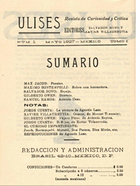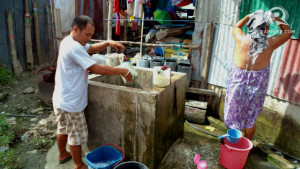Valeria Luiselli ~ Trespassers On The Rooftops: A Secret History Of Mexico City’s Cultural Revolutionaries
 Mexico City rooftops – azoteas – are usually flat. A parapet wall encloses the roof area, creating a kind of open-air patio, less visible to neighbours than the common interior patios of colonial and neocolonial buildings, and not easily accessed by visitors.
Mexico City rooftops – azoteas – are usually flat. A parapet wall encloses the roof area, creating a kind of open-air patio, less visible to neighbours than the common interior patios of colonial and neocolonial buildings, and not easily accessed by visitors.
The rapidly expanding city of the 1920s housed its working classes either in these small rooftop rooms (cuartos de azotea), or in the more well-known vecindades, Mexico’s version of tenement buildings. Brought to Mexico during the conquest in the 16th century, but transformed into the sort of living quarters we know today during the mid-19th century, the vecindades were the typical dwelling space for working-class families, and in them the urban lumpen were crammed into small rooms that surrounded a common patio. While these were occupied by members of the working classes whose jobs did not provide room and board, such as factory workers, builders, or street-vendors, the cuartos de azotea were occupied by maids and servants, usually migrants from the provinces, who worked for the family that lived downstairs.
Read more: http://www.theguardian.com/trespassers-on-the-rooftops
Lammert de Jong ~ De last van de Caribische delen van het Koninkrijk der Nederlanden
Samen met de Caribische delen van het Koninkrijk blijft Nederland werken aan een goede toekomst, aldus de Koning op Prinsjesdag 2015. Wie zou deze veelbelovende doch nietszeggende passage hebben bedacht? Werken aan een goede toekomst vereist veel meer inspanning dan Nederland bereid is in te zetten voor reguliere ondersteuning van de landsdelen. De resolute steun voor rechtshandhaving, ingegeven door een Nederlands belang, steekt schril af tegen de inertie met betrekking tot de ondermaatse kwaliteit van het onderwijs in de landsdelen. Falend onderwijs heeft gevolgen voor burgerschap en de rechtsstaat. Ook op dat terrein zou Nederland moeten werken aan een goede toekomst. Daarentegen worden de Caribische landen door Nederland ervaren als een last, niet als een opdracht. Maar al te graag zou Nederland het tegenwoordig zonder deze gewesten willen doen. In spiegelbeeld geldt dit ook voor de Caribische delen van het Koninkrijk. Over en weer domineert kommer en kwel in plaats van de ambitie er samen het beste van te maken. Koninkrijksrelaties draaien rond de ondersteuning die Nederland de landen biedt, zolang zij daar gebruik van willen maken (Hillebrink). Wie het beter weet, mag het zeggen.
Lees verder: http://www.comitekoninkrijksrelaties.org/de-last-van-de-caribische-delen
NosTV Bonaire ~ Ruben Severina ~ “Papiamentu Na Boneiru”
Where Are The World’s Worst Slums?
According to the UN, almost a billion people live in slums, with numbers set to rise in the future. So where are the world’s largest slums?
David P. Ball ~ Answers To Affordable Housing Are ‘Everywhere’
Vancouverites love to gripe about real estate prices, arguably with good cause. But we may be ignoring solutions to our complaints that are sometimes right under our noses.
Just look two hours north — to the resort town of Whistler.
Twenty years ago the luxury tourist destination, an economic powerhouse for the province, faced a housing crisis. Trapped in a mountain valley, available land dwindled, real estate prices skyrocketed, and local employees wondered if they could afford to live there at all.
Sound familiar? Vancouver’s escalating crisis today is all too similar, with wealthy buyers and scarce land pushing more and more ordinary working families out of the city altogether.
As often from crisis, opportunities emerged in Whistler. In 1997 the municipality created a new public Whistler Housing Authority. Its first task: increase rental stock.
Read more: http://thetyee.ca/Affordable-Housing-Answers/?
Fritzie Rodriguez ~ Barong-Barong: State Of Poor Man’s Housing

WATER. Only 24% of poor households among the country’s poorest provinces have access to running water, a 2015 World Food Programme survey shows. File photo by Fritzie Rodriguez – Rappler
Home sweet home.
But what if one’s home lacks a family’s basic needs? Among the poorest provinces in the Philippines, the poor live in barong-barong (shanty) types – poorly constructed and temporary one-room shelters.
In a August 16 to September 5, 2015 survey sponsored by the World Food Programme (WFP), it was revealed that most poor households, if not shanties, are made of light and cheap materials.
The WFP found that 44% of households among the poorest provinces in the country were barong-barong types, while 47% were poorly constructed semi-permanent or temporary houses. The rest were made of mixed light and heavy materials.
Of the 16 poorest provinces, only the surveyed poor families in Masbate, Camiguin, and Sultan Kudarat reported permanent houses made of good quality materials. Meanwhile, Sarangani had the highest percentage of barong-barong types of housing.
Read more: http://www.rappler.com/filipino-housing?



